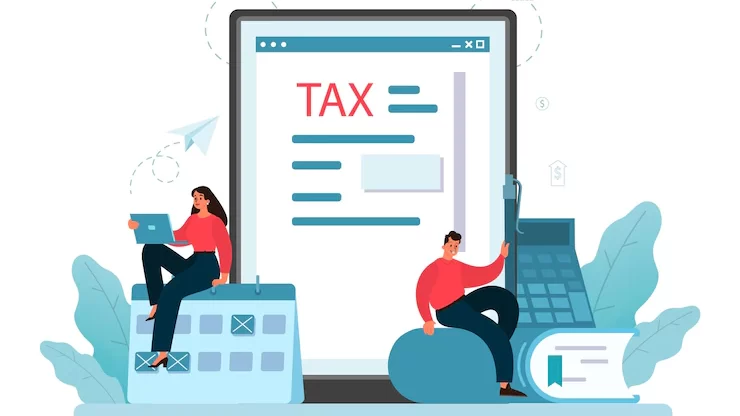6 Ways The New Tax Bill Could Impact Retirement Planning
Congress passed the most significant tax legislation in decades in December 2017 with the passage of the Tax Cuts and Jobs Act (TCJA). This change in federal tax law alters several incentives and limitations that may impact your total taxable income. Because of this, now is a great time to evaluate your retirement goals and consider changing your plans to account for the new laws.
Consider acting fast to grab this two-year opportunity since several of these modifications are scheduled to expire after 2025. After this year, you might be predisposed to risks and failures.
6 Ways The New Tax Bill Could Impact Retirement Planning
That’s why you should take into consideration the following methods:
Transfer Investments Out Of Taxable Accounts
The new, reduced tax rates won’t stay forever for you. They are set to expire in 2025 for individual taxpayers, even if they are permanent for companies. You now have two years to take action and reduce your lifetime tax obligation.
That may be a bold step. Unless they genuinely need the money to support themselves, most people hesitate to withdraw funds from their retirement savings. Financial experts often issue clear warnings about the enormous tax burden that investors would experience once they begin taking distributions from their tax-deferred retirement plans. An investor in their early 60s with $1 million in retirement accounts may have to pay taxes reaching more than $2 million on necessary withdrawals from the age of 70 to the age of 90.
You must be happy and seize this fantastic chance that the new code gives some retirees. For instance, if you’re a married couple paying together and your adjusted gross income (AGI) is $300,000, your effective rate of taxation is 19.7% in 2018 compared to 24.4% under the previous tax law.
That’s a lot less, and by utilizing this technique, you could save thousands of dollars in taxes over a 30-year retirement frame. Therefore, it can make sense to withdraw money quickly over the next two years as long as your overall income stays within the 24% tax bracket (which is $157,500 for single filers and $315,000 for married filers).
After paying the necessary taxes, you can transfer the money into a Roth account for tax-free growth and income or another authorized investment. After your death (sorry, buddy), your regular 401(k)s and IRAs will be subject to ordinary income taxes. Your children will receive the money tax-free and benefit from a stepped-up basis if you keep it out of these accounts and invest it in the financial markets. The tax burden on families and beneficiaries will also be significantly decreased or eliminated by this method.
Redo The Calculations For Your Roth Conversions
After finishing a Roth conversion, you will need a little more time to return. It was typical to perform a Roth conversion early in the year to move funds from pre-tax IRAs to Roth IRAs for tax-free increases and distributions.
Taxes on ordinary income are due on these conversions. You may erase or “recharacterize” it if you change your mind by October 15—for example, if the market performed poorly or your income. But that won’t be authorized by the new law. That is not to say that you shouldn’t perform a conversion. Just be especially careful and do the calculations first.
Probably Skip Itemizing
The fact that the standard deduction is significantly more significant than it was under the old regulations is one of the most important changes to the tax code. A further $1,600 is available to single filers and $2,500 to married filers who are 65 years of age or older.
The new tax code will allow married couples filing jointly to take a combined standard deduction of $26,000 instead of the previous $24,000, plus an additional $2,600 if both are over 65.
The standard deduction will benefit many retirees more than anything else. The standard deduction for single filers over 65 is $13,600. Because of this, you should carefully consider each expense you’ve previously written off and determine whether itemizing is still helpful for you. You can also use your pay stub for important information about your earnings, deductions for taxes, insurance, and more. That helps a lot.
Review Your Debt
It is time to pay off your home loan or that student loan. For homeowners who got a mortgage on or before December 15, 2017, the previous $1 million mortgage interest deduction cap remains. Any new mortgage’s tax deduction is now limited to $750,000. The new regulations set a $10,000 cap on the overall state and local income tax deduction.
Additionally, until 2025, no one will be able to take advantage of the last deduction for interest paid on a home equity line of credit or loan unless they use the money to buy, build, or improve their primary residence or a secondary residence, in which case it will still be deductible. As a result, there isn’t much tax benefit to keeping a mortgage or HELOC on the books.
Do Your Medical Procedures
The bar for deducting medical expenses is smaller. You may write off medical expenses that exceed 7.5% of your AGI under the new legislation. (The previous cutoff was 10%.) It might be worth doing the calculations and bundling up medical bills over the next couple of years if you’ve previously come close to cutting. Through 2019, the lower level was still available. Starting in 2020, the 10% cap was again in the game.
Adjust Your Strategy For Giving
Many people will want to itemize their deductions rather than take advantage of the larger standard deduction. As a result, they might no longer feel pressured to give to charities for tax reasons.
However, there is a different option if you are older than 70. You can still make charitable donations out of your conventional IRA up to $100,000 per year and have them count toward your required minimum distribution. It won’t be taxable if you follow the rules for Qualified Charitable Distribution. (However, if you take a withdrawal first and then donate the money, it does not qualify as a tax-free transfer.)
Bonus Tax Tip
One more point is worth highlighting, even though it has nothing to do with the tax adjustments. Keep your equity-based assets in after-tax accounts as much as possible. As a result, you can benefit from lower capital gains tax rates when you sell the positions to make some good cash. When money is withdrawn from retirement funds, all investments are taxed like ordinary income. Holding more conservative investments in your retirement accounts, such as bonds and annuities, can eventually reduce your tax liability despite what can seem illogical.
Bottom Line
The subject is tricky. There is still a great deal of confusion about the long-term effects of this massive tax reform. If you’re unsure how the changes may affect you for further information and direction, speak with your CPA, tax lawyer, or financial advisor.



















